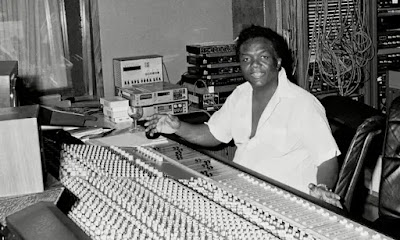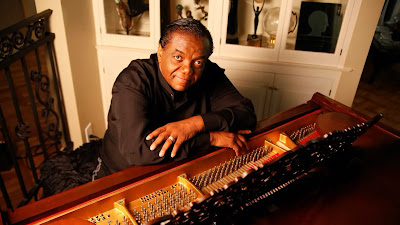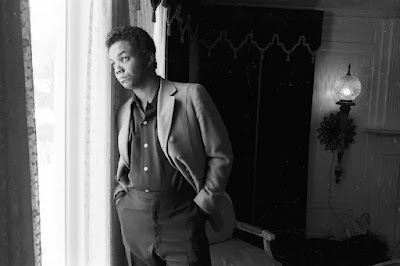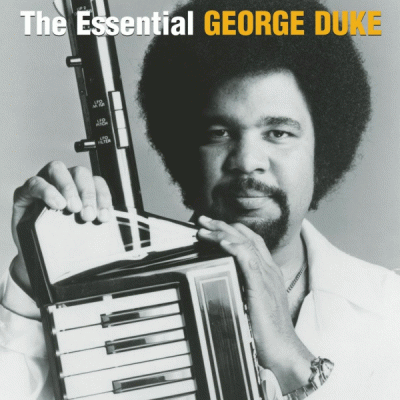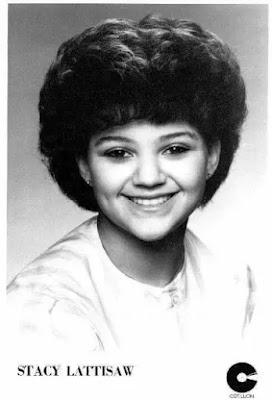dimanche 31 mars 2024
Lamont Dozier
At the age of 13, Dozier founded The Romeos, was signed to Atco Records in 1957. The band had a charting R&B record with the song, "Fine Fine Baby". Shortly thereafter, The Romeos broke up and Dozier joined The Voicemasters, a doo-wop band on Anna Records. Soon after, Dozier signed exclusively to Motown Records in 1962 as an artist, producer, and songwriter.In the early 60’s, Dozier began writing with Brian Holland, and was later joined by Brian's brother Eddie. Over a four-year period, 1963-67, Dozier and brothers Brian and Eddie Holland crafted more than 25 top 10 songs and mastered the blend of pop and rhythm and blues that allowed the Detroit label, and founder Berry Gordy, to defy boundaries between Black and white music and rival the Beatles on the airwaves.
The catalog the trio would create in the 1960’s was a major part of the Motown success. The team of Holland-Dozier-Holland churned out a massive stream of songs for the Supremes, the Four Tops, the Temptations, Martha Reeves & The Vandellas, The Marvelettes, Marvin Gaye. Catalog highlights include “Baby Love", "Where Did Our Love Go", "Baby I Need Your Loving", "You Can't Hurry Love", "Reach Out, I'll Be There", "How Sweet It Is (To Be Loved By You)", "Stop! In The Name of Love", "Love Is Like An Itching In My Heart", "Heat Wave", "Nowhere to Run", "Bernadette", "It's The Same Old Song" and more. Holland-Dozier-Holland were the architects of the self-titled Sound of Young America, and created the songs that turned a fledgling Detroit record company into an industry groundbreaker and powerhouse.After leaving Motown, Holland-Dozier-Holland had a string of hits on the Invictus and Hot Wax labels that rank with their best at Motown. The post-Motown period produced Freda Payne's "Band Of Gold" and Chairmen of the Board's "Give Me Just A Little More Time" and “Why Can’t We Be Lovers”.
In 1972, after the Invictus label failed, Dozier decided to break all business ties with the Hollands and moved to California. The momentum from the “Why Can’t We Be Lovers” record landed him a recording contract with ABC Dunhill Records. Recording as a solo artist at ABC, Dozier scored two pop hits with "Trying To Hold On To My Woman" and "Fish Ain't Bitin'," pushing his first solo album past the RIAA gold mark.In the late 1970’s, Dozier shifted labels producing and writing gold and platinum albums for Warner Bros., Arista Records and Columbia Records. In 1980, he moved to England and began working with British vocalists such as Alison Moyet and Simply Red. During this period, Dozier wrote for her the top ten hit, "Invisible", as well as "You've Got It.” He met Phil Collins in 1985, backstage at one of Collins’ shows in Los Angeles. Phil had recorded a top ten hit with his cover version of Dozier's "You Can't Hurry Love", originally penned for The Supremes and when Collins was co-producing Eric Clapton’s August album, Dozier contributed two songs "Hung Up On Your Love Again" and "Run".Holland-Dozier-Holland were inducted into the Songwriters Hall of Fame in 1988 and the Rock and Roll Hall of Fame two years later. Dozier had a top 20 hit with “Trying to Hold on to My Woman,” helped produce Aretha Franklin’s Sweet Passion album and collaborated with Eric Clapton and Hucknall among others. His biggest success was co-writing Phil Collins’ chart-topping “Two Hearts,” from the 1988 movie Buster, a mid-tempo, Motown-style ballad that won a Grammy and Golden Globe and received an Oscar nomination.Dozier began composing songs with an eye towards landing another record deal for himself as an artist, which he accomplished that in 1991 with Atlantic Records. The new album featured “Love in the Rain”, with guest appearances by Eric Clapton and Phil Collins. Unhappy at Atlantic, Dozier decided to start his own record label to market and distribute his own recordings. 2002 marked a new Dozier album, Lamont Dozier...An American Original, the first release for Hithouse Records, which he founded in the late 1990’s with his wife and business partner, Barbara Ullman Dozier. The album earned a Grammy Award nomination in 2002 for Best Traditional R&B Vocal Album.Reflecting on the 60’s Motown collaboration with the Holland’s, Dozier said that he and the Hollands had no idea in the '60s what impact their songs were having on America, they were too busy cranking them out. "We were just kids, banging this stuff out," he said. "We had no idea these songs would be around one day to the next, much less 35 to 40 years later."Dozier continued wearing many hats as producer/songwriter/recording artist. He completed a series of educational tapes entitled The Lamont Dozier School of Music and continued to work with new artists of every genre.
Dozier's long-time wife of 40 years, Barbara Ullman Dozier, died in 2021 and he is survived by his children; Lamont Dozier Jr., Michelle Dozier, Michael Renee Dozier, Beau Alexandre Dozier, Paris Ray Dozier and Desiree Starr Dozier.
George Duke
Duke continues to both produce and release new albums, his latest being Dukey Treats in 2008. Duke is the recipient of numerous awards including multiple Grammy nominations, the Edison Life Time Achievement Award, and Keyboard Magazine’s "R&B Keyboardist of The Year."
George Duke passed away on August 5, 2013.
Brothers Johnson (George Johnson and Louis Johnson)
The Johnson brothers - George on guitar and Louis on bass - got their first break backing popular R&B acts in their hometown of Los Angeles. Their reputations increased, and they landed jobs in Billy Preston's touring band when Preston was at his commercial peak, also writing songs for the keyboardist. Quincy Jones then hired the brothers to tour Asia with him, ultimately leading to Jones assisting them in obtaining a deal with A&M Records and agreeing to produce their debut album, Look Out for #1.
Look Out began a five year string of platinum albums and top ten hits that highlighted the brothers' funk chops but with the danceable, lush production that epitomized Quincy Jones' work of that era. Among the biggest hits were "Strawberry Letter 23," "Get The Funk Out of My Face," "Ain't We Funkin' Now" and the irresistible Rod Temperton dance hit "Stomp."The duo began its commercial descent with 1981's Winners and they never truly bounced back. After splitting for a two year period, the brothers returned in 1984 with the Leon Sylvers-produced Out of Control (which landed the minor hit "You Keep Me Comin' Back"), but continued to spend more time on side projects than on their act. By the time of 1988's Kickin', the Brothers Johnson's chart-topping days were over.Louis and George have continued their separate projects, occasionally reuniting for concerts. They released the concert album Strawberry Letter 23:Live in 2004.
Kleeer
Kleeer was a New York based funk and disco band which was formed in 1972 under the name The Jam Band, as a backup group to different disco bands and vocalists. The group consisted of Woody Cunningham, vocalist/percussionist Paul Crutchfield, guitarist Richard Lee and bassist Norman Durham.
After a switch to the name Pipeline in 1975, the group also decided to switch to making hard rock instead of disco. Record labels competed to sign them but, when they finally ended up at Columbia Records, their single "Gypsie Rider" did not fare well commercially.
In 1976 they got the opportunity to become The Universal Robot Band along with underground disco producers Patrick Adams and Greg Carmichael. This project was more successful than their previous work. They made the single "Barely Breaking Even" alongside singer Leroy Burgess, and they also recorded an album. The group toured as The Universal Robot Band until 1978.
After 1978 the band decided to take control of the production of their albums, and also changed to the name Kleeer.
Between 1979 and 1985 the group released seven albums and had several hits in the Billboard Hot 100 and in R&B charts. The most mentionable are "Tonight's the Night", "Winners", "Intimate Connection", and "Get Tough." The sound was now more focused on 1980s style funk, and electronic instruments, like vocoders and synthesizers.
After the 1985's album Seeekret, the band disappeared for unknown reasons. Most of the musicians continued working with other projects. In the 1990s, however, the group re-emerged as Kleeer at some occasions.
The group's influence today is best found in many hip hop songs, where Kleeer songs have been sampled by artists ranging from 2Pac to Snoop Dogg to Lil Jon.
Even the present day dance community has rediscovered the act's music, as one of their recordings, "Keeep Your Body Workin", which reached number 54 on the Billboard Hot Dance Club Play Chart in 1979, was "reworked" into a updated recording by Tony Moran featuring Martha Wash, under the title "Keep Your Body Working." The Moran/Wash version reached number one on the Hot Dance Club Play chart in December 2007.
Group member Woody Cunningham died in January, 2010, just months after releasing a solo album. Sadly, Durham died tragically from carbon monoxide poisoning following a snowstorm in November, 2011Slave
Other Top Ten R&B hits were "Just a Touch of Love" in 1979, "Watching You" in 1980, and "Snap Shot" in 1981. They added Charles Carter on sax and brother Sam Carter on keyboards. Young, Washington, Jones and Lockett departed to form Aurra in 1981. Slave added Roger Parker, Delbert Taylor,JR., and Kevin Johnson as replacements. Arrington himself left in 1982 after the Showtime album. They continued on, though much less successfully, into the late 1980s.
They moved to Atlantic Records for one LP in 1984, then switched to the Atlanta-based Ichiban Records in 1986. Their most recent release was The Funk Strikes Back in 1992. Rhino issued Stellar Fungk: The Best of Slave Featuring Steve Arrington, an anthology of their finest cuts, in 1994.
Stacy Lattisaw
She recorded her first album at the age of twelve, and has scored 22 R&B chart hits with several songs— "Let Me Be Your Angel", "Jump to the Beat", "Love on a Two-Way Street", and "Miracles"—crossing over to the Pop mainstream. Her first album, produced, arranged, and conducted by Van McCoy, featured the highly-orchestrated disco tune When You're Young And In Love.
In 1980, she went to #1 on the Hot Dance Music/Club Play chart with "Dynamite!" / "Jump To the Beat." However it was not until she affiliated with Narada Michael Walden, a former drummer with the Mahavishnu Orchestra who was just beginning a career as a producer, that she became a star. Under Walden's direction, she had five hit albums between 1981 and 1986. She also opened for the Jacksons Triumph Tour in 1981. From Lattisaw's 1982 album "Sneakin' Out", Mariah Carey used a sample of the song "Attack Of The Name Game" (R&B #14) for her 1999 number 1 hit "Heartbreaker". Her other big Dance chart hits include "Nail It To the Wall" (#2 in 1986) and "Jump Into My Life" (#3 in 1987). Stacy also scored hits with her childhood friend, the singer, Johnny Gill.
Lattisaw continued recording into the late 1980s, signing to Motown in 1986. She scored her only #1 R&B hit with frequent duet partner Johnny Gill entitled "Where Do We Go from Here" in 1989. While the success was great, she grew increasingly disenchanted with the record industry. By the early 1990s, she decided to retire from the music industry and concentrate on raising her family. In addition, her official website states that she is now working on a gospel CD. In 2010, Lattisaw's music career was chronicled on the TV One (US TV network) docu-series "Unsung (TV series)", in which she also appeared.
| 1979 | Young and in Love |
| ||
| 1980 | Let Me Be Your Angel | |||
| 1981 | With You | |||
| 1982 | Sneakin' Out | |||
| 1983 | Sixteen | |||
| 1984 | Perfect Combination (with Johnny Gill) | |||
| 1985 | I'm Not the Same Girl | |||
| 1986 | Take Me All the Way |
| ||
| 1988 | Personal Attention | |||
| 1989 | What You Need |


